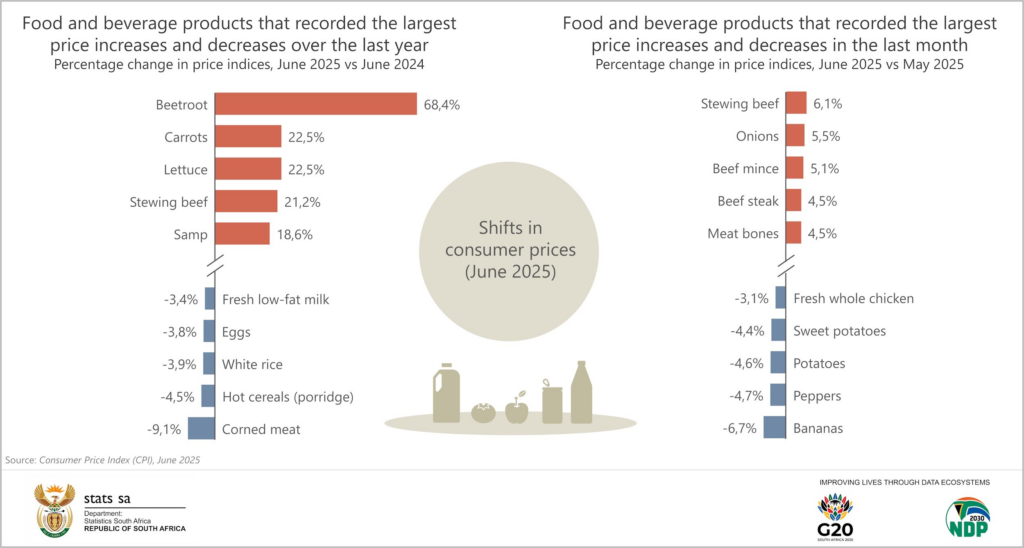Is beef still for every South African — or just the rich?

A shopper reviews their list as beef prices loom high in the background.
As South Africans prepare for payday weekend and dust off their braai grids, many are finding that the real heat is coming from the price tags at the butchery. The cost of meat has surged to a 25-month high, with beef taking the biggest bite out of consumer wallets.
According to Smile FM, meat prices jumped by 6.6% year-on-year, with a sharp 2.2% rise recorded in June 2025 alone. Stewing beef, in particular, has seen an eye-watering 21.2% increase over the past year – the steepest rise since South Africa’s current consumer price index began in 2017. Other popular cuts like mince and steak haven’t been spared either.
Experts have pointed to the outbreak of foot and mouth disease as a key driver behind the supply crunch. With farmers unable to slaughter livestock due to biosecurity restrictions, a shortage of beef has pushed prices higher across the board. Local sellers have warned that the worst may not yet be over, especially in disease-hit areas such as KwaZulu-Natal and the Free State.

While beef prices lead the surge, the impact has rippled across the broader food basket. The annual inflation rate for food and non-alcoholic beverages climbed to 5.1% in June, marking a 15-month high. Overall consumer inflation rose slightly to 3.0% in June, up from 2.8% in April and May.
Chicken lovers aren’t immune either. Earlier bans on Brazilian imports – due to bird flu fears – disrupted the availability of mechanically deboned meat (MDM), widely used in processed foods like polony. Although the restrictions have since eased, local manufacturers are still struggling to stabilise supplies.
It’s not just meat making meals more expensive. Vegetables like beetroot, lettuce and carrots continue to register double-digit annual increases. Nuts are also pricier, though peanuts have seen a slight dip.
Amid the squeeze, there’s a small pocket of relief in dairy and staples. Prices for full-cream milk, low-fat milk, and eggs have declined, helping push the dairy index into mild deflation. White rice and breakfast cereals have also become a bit more affordable, offering some respite for budget-conscious shoppers.

Looking ahead, Investec’s Chief Economist Annabel Bishop forecasts that inflation could continue its upward trend through the rest of 2025. She expects CPI to move above 3.0% in July and possibly climb towards 4.0% by year-end. The Reserve Bank’s repo rate remains at a high 7.25%, though Bishop anticipates a 25 basis point cut either in July or later in the year, with more easing possible in 2026.
For now, South Africans may have to adjust their weekend menus, scaling back their braais or opting for more affordable cuts and alternatives. As food inflation continues to simmer, the nation’s appetite for red meat may be tempered – at least until supply conditions improve.

